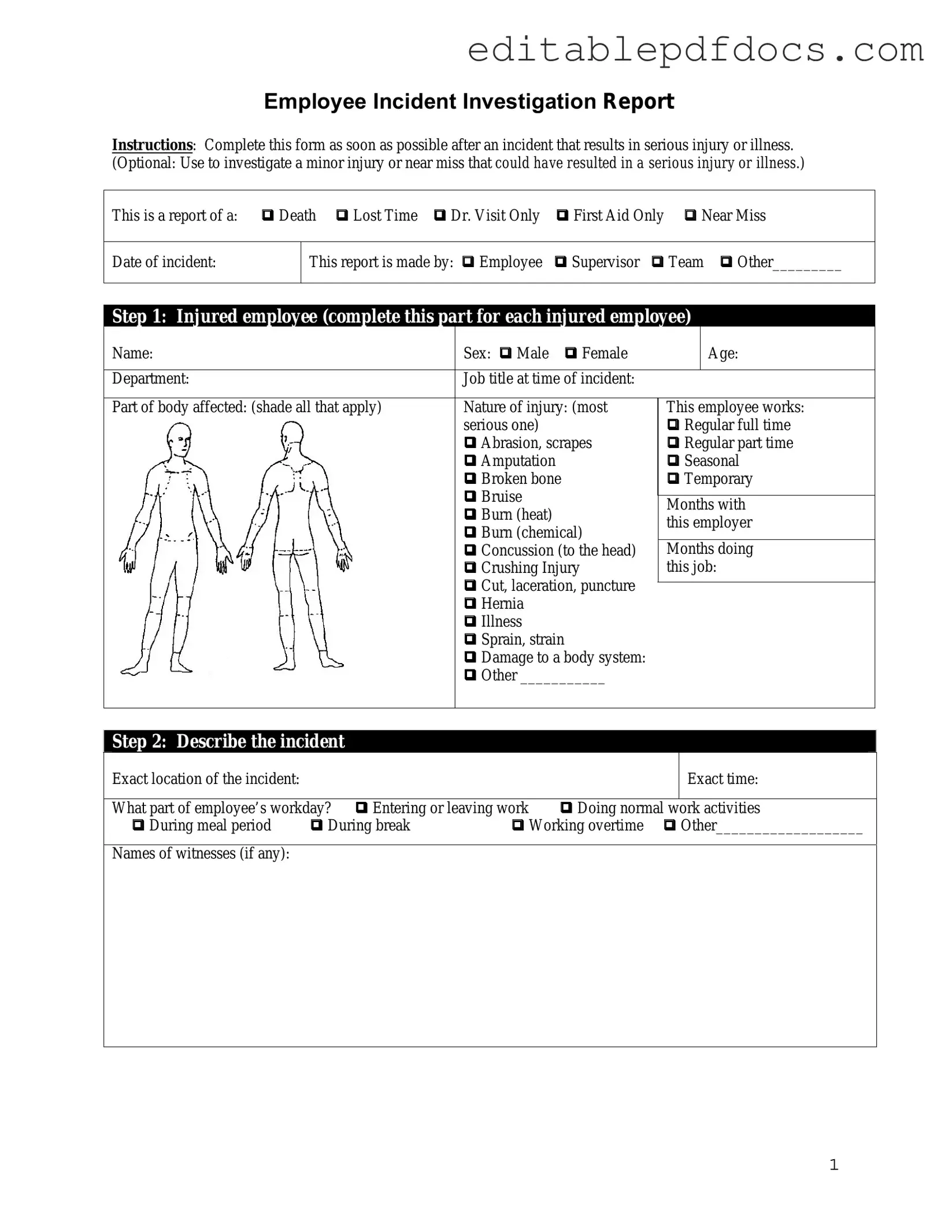In any workplace, the safety and well-being of employees are paramount. When an accident occurs, documenting the incident accurately is crucial for both legal and operational purposes. The Employee Accident Report form serves as an essential tool in this process. This form typically captures vital information, such as the date, time, and location of the accident, along with a detailed description of the events leading up to the incident. It also includes sections for identifying the individuals involved, any witnesses present, and the nature of the injuries sustained. Furthermore, it may require the reporting of immediate actions taken in response to the accident, as well as recommendations for preventing future occurrences. By ensuring that all relevant details are recorded, this form not only aids in the investigation but also supports the employee in receiving the necessary care and compensation. Proper completion of the Employee Accident Report form can significantly influence the outcome of any subsequent claims or legal proceedings, making it a critical component of workplace safety protocols.
